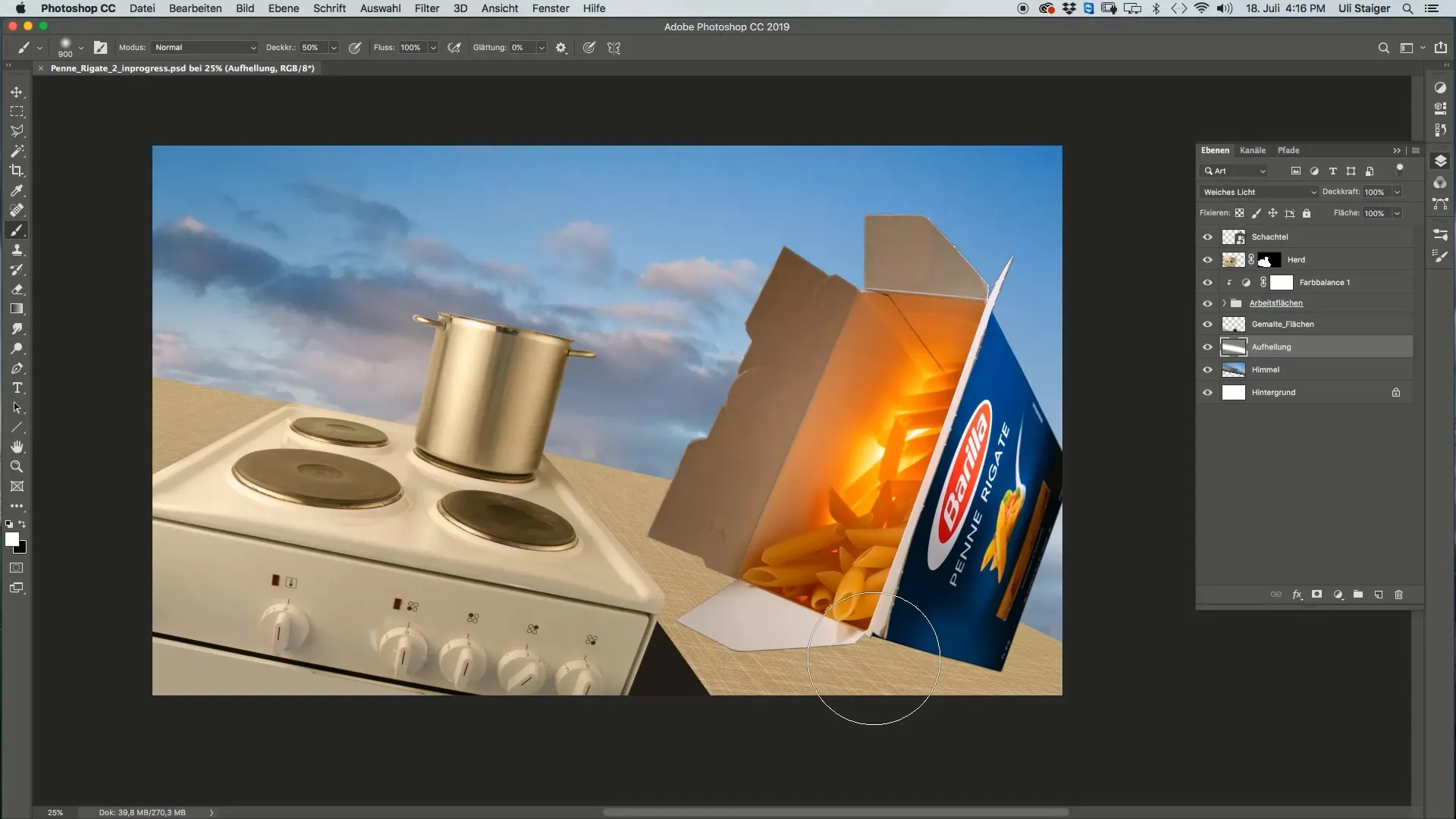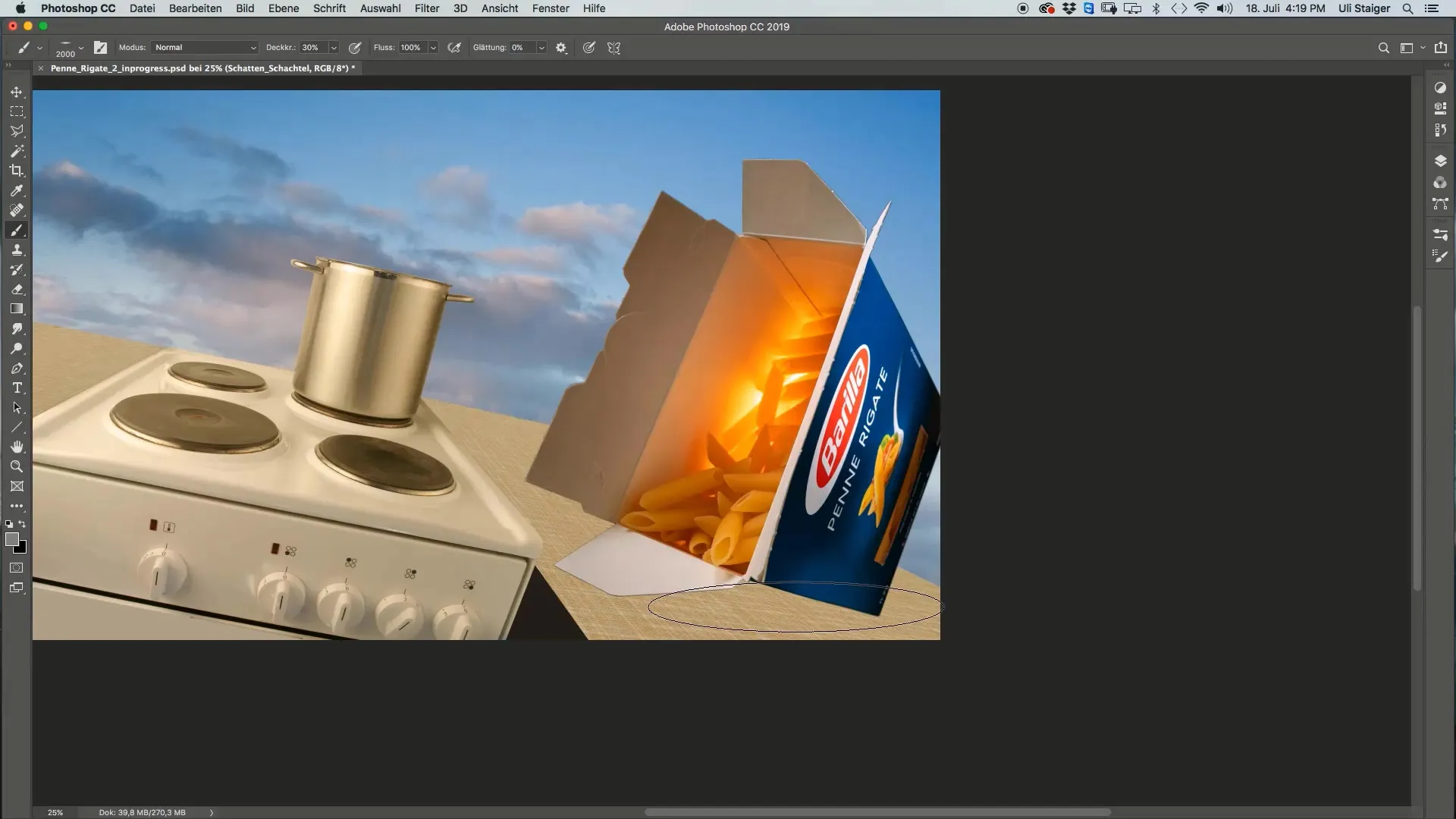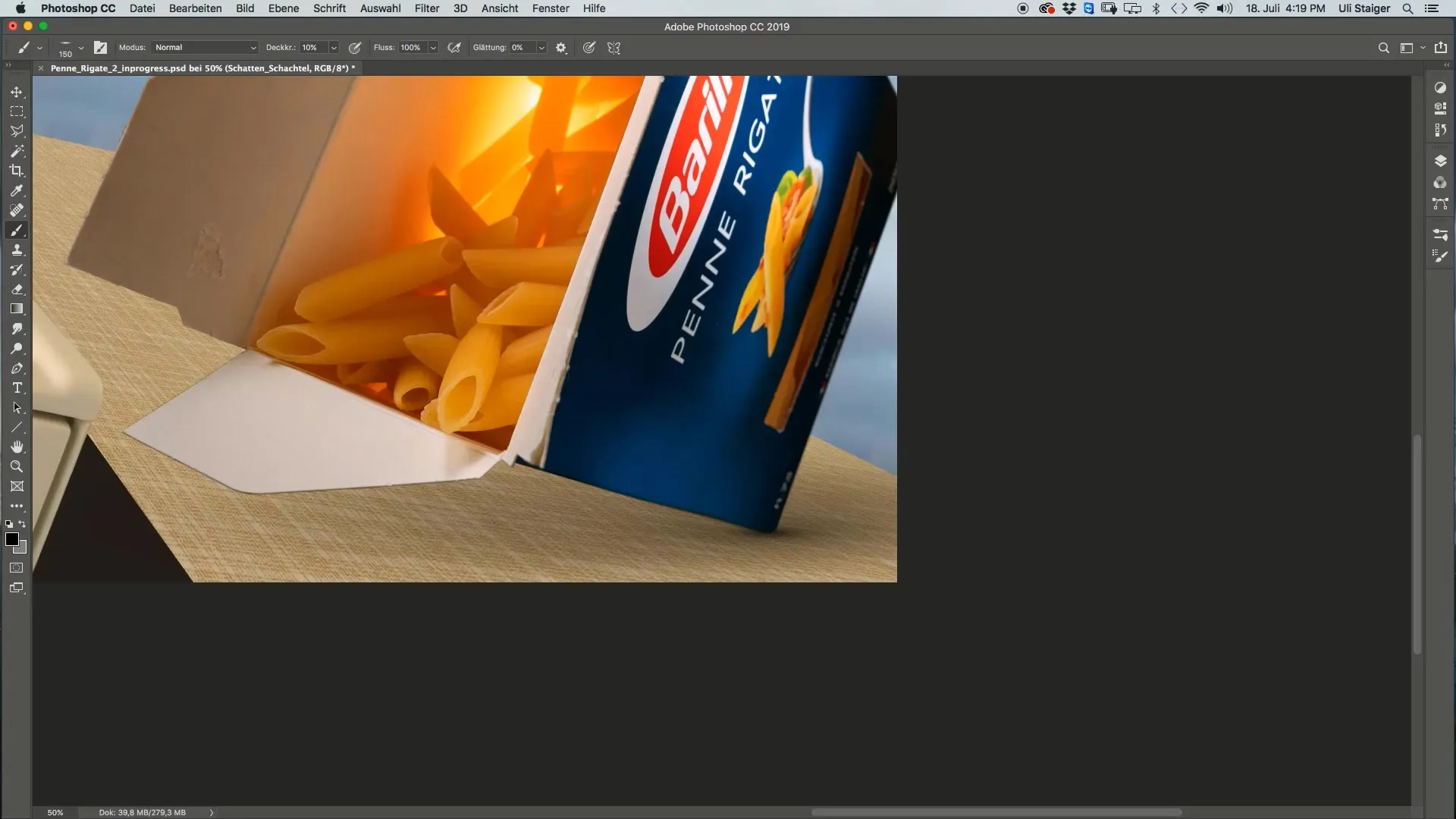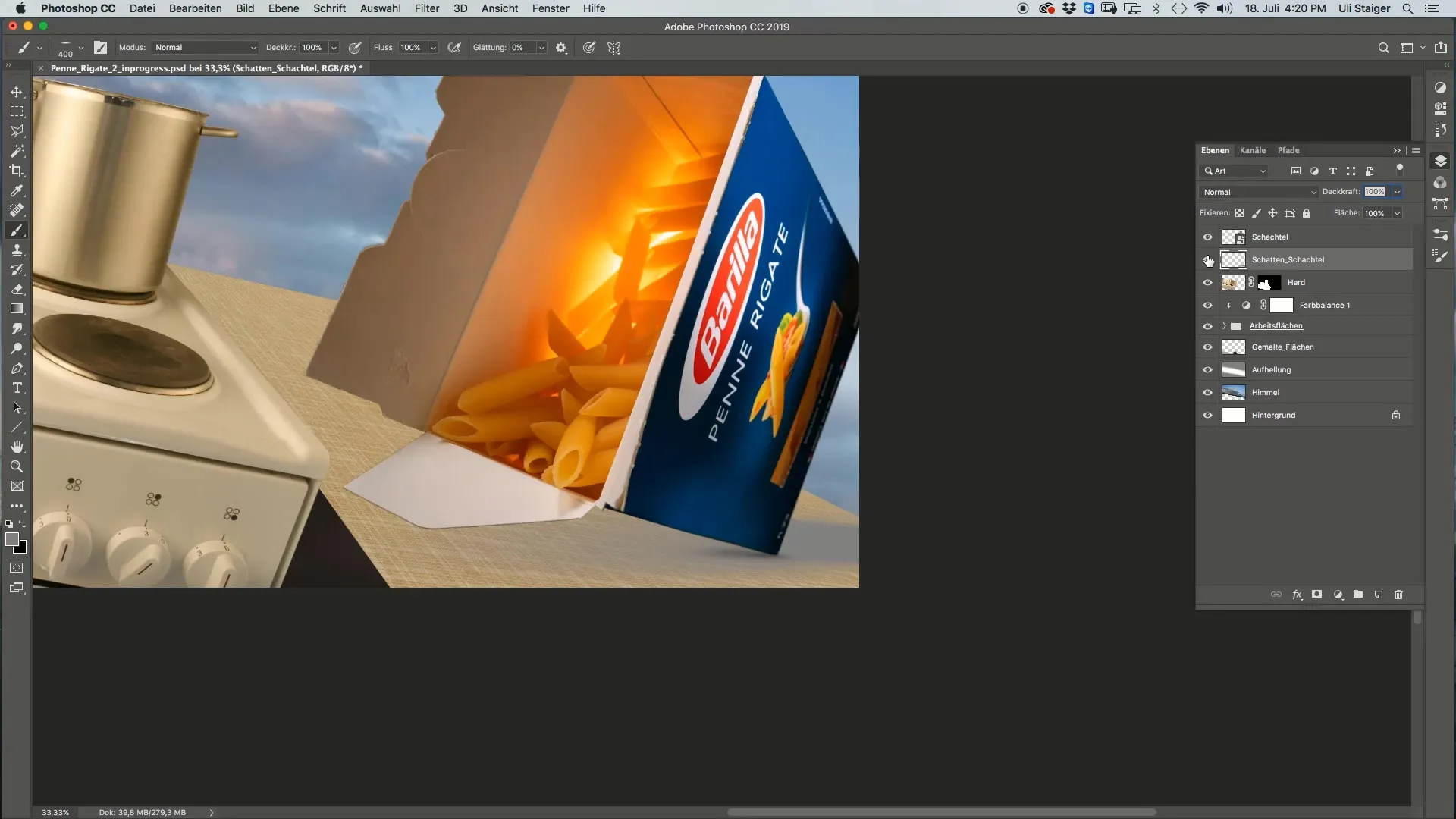Creating realistic shadows in Photoshop can make the crucial difference between a flat, unnatural image and an appealing, vibrant composition. In this tutorial, you will learn how to give a box an effective shadow, ensuring that it harmonizes with its surroundings and conveys a three-dimensional impression. The method focuses mainly on the brush tool and the correct layer settings.
Key Takeaways
- Creating a new shadow layer underneath the box
- Using medium gray and the blending mode "Multiply"
- Adjusting the brush according to the perspective
- Applying core shadows with a higher opacity for realistic effects
Step-by-Step Guide
1. Creating the Shadow Layer
First, you need a new layer that will serve as the base for your shadow. Create this layer directly below the box to establish a connection to the base and prevent the box from floating. To create the layer, click on the "New Layer" icon and name it "Box Shadow" for easier organization.

2. Setting the Layer Mode
To create a realistic shadow, set the new layer to the blending mode of "Multiply." This will make the shadow more effective and adapt to the underlying layer. This step is often overlooked but is crucial in maintaining the naturalness of the shadow.
3. Choosing Base Color for the Shadow
Choose the color "Medium Gray" for your shadow. The RGB value for an ideal medium gray should be 128 for all color channels. This neutral color will later serve as the basis for the shadow. The simplicity of the gray color ensures that the shadow looks realistic without being visually distracting.
4. Adjusting the Brush
To paint a shadow evenly, you need to adjust the brush to the perspective of the box. Find the brush settings and change the brush shape to a flat, wide brush with an opacity of about 30%. Set the angle to 0° to achieve a uniform texture.
5. Painting the Shadow
Now that the preparations are made, start painting the shadow under the box. Use a large brush size (e.g., 2000 pixels). Although this may seem large, it allows you to efficiently create the basic shape of the shadow. Make sure to gradually reduce the brush size and overlay layers to create more depth.
6. Refining the Shadow Details
Once the shadow is roughly sketched, begin refining it with details. Further reduce the brush size and work with different opacities to shape the core shadow, the darker area directly under the box. Choose black with an opacity of 10% for precise accents.

7. Creating the Core Shadow
The core shadow is crucial for the illusion of the hovering effect of your box. You should paint the core shadow closer to the box so that it looks good from all sides since the box is close to the ground. Adjust the shadow area accordingly to allow only a little light to pass through.

8. Adjustment and Finalization
Once you are satisfied with the visibility of your shadow, you can adjust the opacity to increase the intensity. It is helpful to temporarily change the blending mode to "Normal" to have a clear view of the changes before switching back to "Multiply" for the final presentation.

Summary
This guide shows you how to effectively create shadows for your box in Photoshop. By creating a separate shadow layer, adjusting the brush tool, as well as the correct color and opacity adjustments, you achieve a convincing three-dimensional representation of your box.
Frequently Asked Questions
Which color should I use for the shadow?Use a medium gray with RGB values 128 for all channels.
How do I adjust the brush in Photoshop?Go to the brush settings to change the shape and opacity.
What is the advantage of the "Multiply" blending mode?It ensures that the shadow looks more natural and blends efficiently with the background.
How do I reduce the brush size in Photoshop?Use the brush size slider or press the keys [ and ] on your keyboard to change the size.
What is a core shadow?A core shadow is the darker area directly under an object, created by its proximity to the surface.


